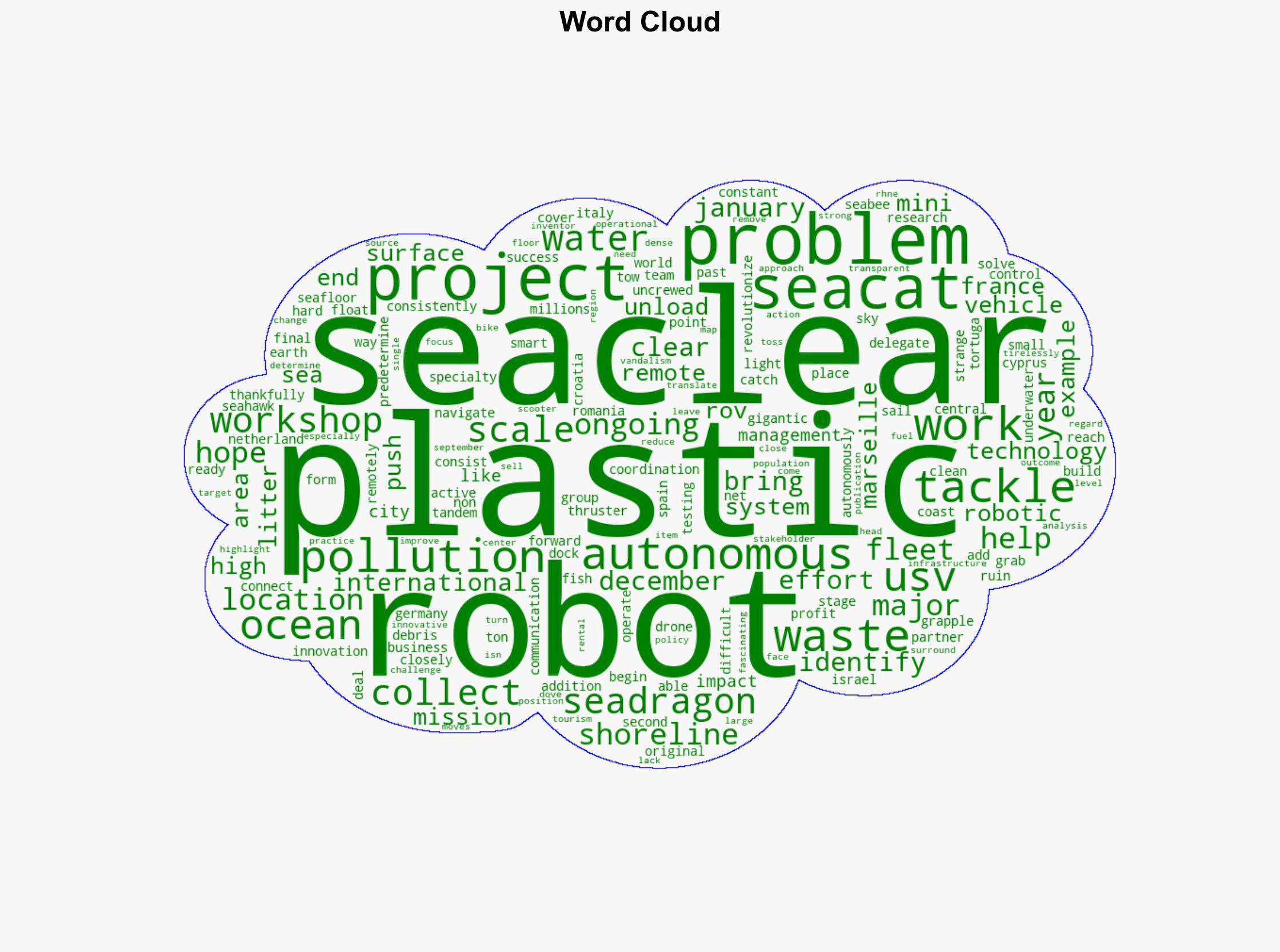How A Fleet Of Autonomous Robots Is Solving A Major Pollution Problem – BGR
Published on: 2025-11-15
AI-powered OSINT brief from verified open sources. Automated NLP signal extraction with human verification. See our Methodology and Why WorldWideWatchers.
Intelligence Report:
1. BLUF (Bottom Line Up Front)
The deployment of the SeaClear autonomous robot fleet presents a promising technological solution to oceanic plastic pollution, with a moderate confidence level in its potential effectiveness. The most supported hypothesis is that the SeaClear project will significantly enhance plastic waste collection capabilities in targeted regions, but its success depends on integration with broader waste management policies. Recommended actions include fostering international collaboration for policy alignment and expanding the project to other high-impact areas.
2. Competing Hypotheses
Hypothesis 1: The SeaClear project will effectively reduce oceanic plastic pollution in targeted areas, leading to a scalable model for global application.
Hypothesis 2: The SeaClear project will face operational and logistical challenges that limit its impact, necessitating supplementary measures for meaningful pollution reduction.
Hypothesis 1 is more likely due to the project’s comprehensive approach, involving international collaboration and advanced technology. However, Hypothesis 2 remains plausible given potential technical and environmental challenges.
3. Key Assumptions and Red Flags
Key assumptions include the technological reliability of autonomous robots and the adequacy of current project funding. A red flag is the potential underestimation of logistical complexities in diverse marine environments. There is also a risk of over-reliance on technology without addressing root causes of pollution.
4. Implications and Strategic Risks
If successful, the SeaClear project could set a precedent for technological interventions in environmental conservation, potentially influencing policy and funding priorities. However, failure could lead to skepticism about technological solutions, impacting future investments. There is also a risk of geopolitical tensions if international waters are involved without clear agreements.
5. Recommendations and Outlook
- Promote international policy frameworks to support technological solutions like SeaClear.
- Encourage public-private partnerships to enhance funding and innovation.
- Best-case scenario: SeaClear becomes a model for global adoption, significantly reducing oceanic plastic pollution.
- Worst-case scenario: Technical failures and logistical issues limit impact, leading to project discontinuation.
- Most-likely scenario: SeaClear achieves moderate success, prompting further iterations and policy integration.
6. Key Individuals and Entities
SeaClear Project Team, International Collaborators (Croatia, Cyprus, France, Germany, Italy, Netherlands, Romania, Spain, Israel).
7. Thematic Tags
Regional Focus, Regional Focus: Mediterranean Sea, European Union
Structured Analytic Techniques Applied
- Causal Layered Analysis (CLA): Analyze events across surface happenings, systems, worldviews, and myths.
- Cross-Impact Simulation: Model ripple effects across neighboring states, conflicts, or economic dependencies.
- Scenario Generation: Explore divergent futures under varying assumptions to identify plausible paths.
Explore more:
Regional Focus Briefs ·
Daily Summary ·
Support us
·





